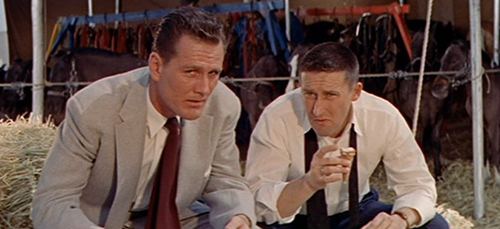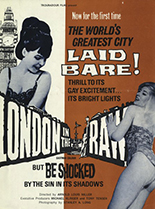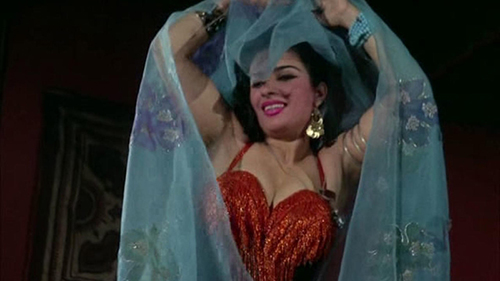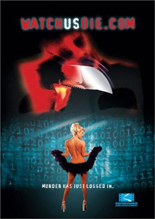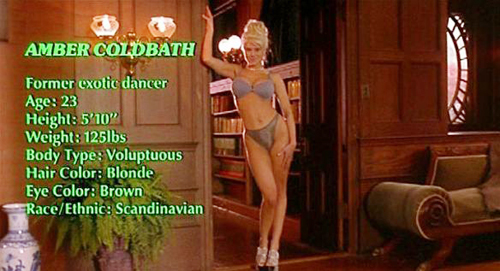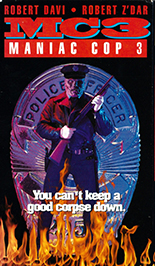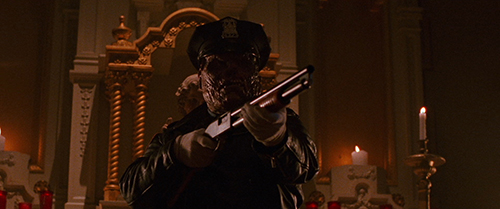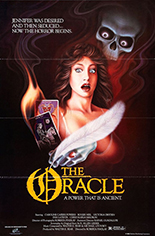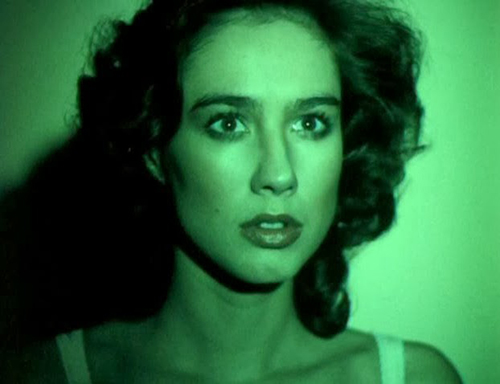
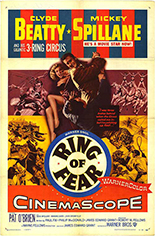 Now that circuses have been shamed out of existence, members of the next generation may be curious what they missed. On the basis of Ring of Fear, a good third of which is circus footage, not a damn thing.
Now that circuses have been shamed out of existence, members of the next generation may be curious what they missed. On the basis of Ring of Fear, a good third of which is circus footage, not a damn thing.
As he does in the Abbott and Costello jungle jam, Africa Screams, top-billed circus mogul Clyde Beatty plays his charisma-free self, bringing (per the credits) “the entire Clyde Beatty Circus” to town. The citizens are agog at Beatty’s arrival, as if they’re getting a Costco.
Paying particular attention to the news is Dublin O’Malley (Sean McClory, The Day of the Wolves), Beatty’s former “ring director,” now in a mental institution following an unexplained incident in Iwo Jima. Dublin talks to a photograph of Beatty’s trapeze artist, Valerie (Marian Carr, Kiss Me Deadly); once upon a time, she returned Dublin’s now-delusionary pining.
Informed Valerie’s now married to a “top aerialist,” Dublin punches his way out of the asylum and, hopefully, back into her heart. (It’s tough to blame the poor chap once we finally see Valerie in all her animal-print voluptuousness.) Dublin’s plan is to get rehired with Beatty’s circus … and then sabotage it from within by rigging the big cat rope to force “accidents,” preferably fatal. For help, he recruits Twitchy (Emmett Lynn, Skirts Ahoy!), an illiterate clown.
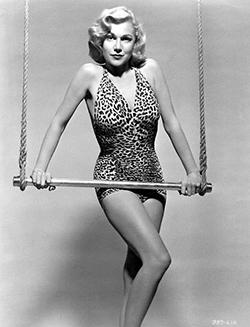 As injuries pile past the point of coinkydink, Beatty’s right-hand man (Pat O’Brien, Billy Jack Goes to Washington) hires an investigator, bestselling mystery novelist Mickey Spillane, playing bestselling mystery novelist Mickey Spillane. Never mind asking a practitioner of detective fiction to solve a crime is like soliciting Fifty Shades of Grey author E.L. James for a blowjob, because Spillane has more screen presence than any cast member, save Carr.
As injuries pile past the point of coinkydink, Beatty’s right-hand man (Pat O’Brien, Billy Jack Goes to Washington) hires an investigator, bestselling mystery novelist Mickey Spillane, playing bestselling mystery novelist Mickey Spillane. Never mind asking a practitioner of detective fiction to solve a crime is like soliciting Fifty Shades of Grey author E.L. James for a blowjob, because Spillane has more screen presence than any cast member, save Carr.
Produced by John Wayne, this CinemaScope programmer is directed with indifference by James Edward Grant (the Duke’s Angel and the Badman) and improbably by the legendary William Wellman (1937’s A Star Is Born), sans credit. All the pedigree can’t make up for three-ring crowd shots bumping next to blurry stock footage, ridiculous dialogue (“You stupid, unconscious blithering idiot, you!”), weak acting by lead McClory and weakest acting by Beatty, whose bewildering response to a death is a toothy grin and shake of the head.
Also unable to save Ring of Fear from a pedestrian fate? The Thing from Another World’s Kenneth Tobey, any number of Flying Wallendas and Pedro the Kangaroo. —Rod Lott

